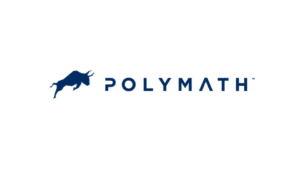Agriculture is the backbone of many economies worldwide, providing food, raw materials, and livelihoods to millions of people. However, farmers face significant challenges, including unpredictable weather, pests, diseases, and market fluctuations. To mitigate these risks, insurance has long been a critical tool. Yet, traditional insurance systems are often fraught with inefficiencies, delays, and a lack of transparency. Enter blockchain technology—a revolutionary approach that promises to transform livestock and crop insurance, making it more transparent, efficient, and reliable.
Understanding Blockchain Technology
Blockchain is a decentralized digital ledger that records transactions across multiple computers in a secure, tamper-proof manner. Each block of data is linked to the previous one, creating a chain of information that is transparent and immutable. This technology offers several key benefits that make it ideal for applications in agriculture insurance:
Transparency:
All transactions are visible to authorized parties, reducing disputes and enhancing trust.
Security:
Data is encrypted and distributed across a network, making it highly resistant to tampering.
Efficiency:
Automated processes and smart contracts reduce administrative overhead and delays.
These features address many of the pain points in traditional insurance systems, paving the way for more effective coverage for farmers.
Challenges in Traditional Livestock and Crop Insurance
Before diving into blockchain’s potential, it is crucial to understand the limitations of conventional livestock and crop insurance:
Lack of Transparency
Farmers often struggle to understand policy terms, claim procedures, and payout calculations. This lack of clarity can lead to mistrust and dissatisfaction.
Slow Claim Processing
Claims often require extensive documentation and manual verification, causing significant delays in payouts. For farmers facing urgent needs, these delays can be devastating.
High Administrative Costs
Insurance providers incur substantial expenses in underwriting, claims assessment, and fraud prevention, driving up premiums for farmers.
Limited Accessibility
Small-scale farmers in remote areas often lack access to affordable insurance products due to logistical and financial constraints.
Blockchain technology can address these issues, offering a more farmer-centric approach.
How Blockchain Transforms Livestock and Crop Insurance
Blockchain technology brings a host of advantages that can revolutionize the agricultural insurance space. Here’s how:
Transparent Policy Management
With blockchain, insurance policies can be digitized and stored on a shared ledger. Farmers, insurers, and regulators can access the same information, ensuring complete transparency. Smart contracts—self-executing agreements with predefined rules—can automate policy terms and eliminate ambiguities.
For example, a smart contract could automatically trigger a payout when certain conditions, such as extreme weather events, are met.
Faster Claims Processing
Blockchain enables real-time data sharing and verification. Weather data, satellite imagery, and IoT sensors can feed directly into the blockchain, providing accurate and timely information. This automation reduces the need for manual intervention, speeding up claim settlements.
Imagine a scenario where a farmer’s crops are damaged by a drought. Sensors in the field detect soil dryness, and weather data confirms prolonged aridity. The blockchain smart contract processes this information and initiates a payout without requiring the farmer to file a claim manually.
Reduced Fraud and Errors
Fraudulent claims and data manipulation are significant challenges in traditional insurance. Blockchain’s immutable ledger ensures that all transactions are permanently recorded and verifiable. This reduces the likelihood of fraud and errors, protecting both insurers and farmers.
Lower Administrative Costs
By automating processes and eliminating intermediaries, blockchain significantly reduces administrative expenses. These cost savings can be passed on to farmers in the form of lower premiums.
Improved Accessibility
Blockchain-based platforms can integrate with mobile applications, making insurance products more accessible to small-scale farmers in remote areas. Payments and claims can be processed digitally, eliminating the need for physical visits to insurance offices.
Real-World Applications of Blockchain in Agriculture Insurance
Several projects and initiatives are already demonstrating the potential of blockchain in livestock and crop insurance:
ACRE Africa
ACRE Africa is leveraging blockchain technology to provide weather-based index insurance to smallholder farmers. By using blockchain to automate data collection and claims processing, ACRE Africa ensures timely payouts, enhancing farmers’ resilience.
Etherisc
Etherisc is a decentralized platform offering blockchain-based insurance solutions, including crop and livestock coverage. Farmers can purchase policies, file claims, and receive payouts directly through the platform, all powered by smart contracts.
Pula
Pula is another innovative initiative using blockchain to deliver affordable insurance to small-scale farmers. The platform integrates satellite data and blockchain to assess risks and process claims efficiently.
Benefits of Blockchain-Based Insurance for Farmers
Adopting blockchain technology in livestock and crop insurance offers numerous advantages for farmers:
Fair and Transparent Policies:
Farmers can clearly understand policy terms and conditions, building trust in the system.
Timely Payouts:
Automated claims processing ensures farmers receive compensation promptly, minimizing financial stress.
Affordability:
Reduced administrative costs and streamlined processes make insurance more affordable.
Increased Coverage:
Accessible platforms enable more farmers to benefit from insurance, enhancing agricultural productivity and resilience.
Challenges and Considerations
While the potential benefits are immense, implementing blockchain-based insurance systems is not without challenges:
Technological Barriers
Adopting blockchain requires access to reliable internet and digital devices, which may be limited in rural areas.
Initial Costs
Developing and deploying blockchain systems involves significant upfront investment. Collaboration between governments, insurers, and tech companies is essential to share these costs.
Regulatory Hurdles
Regulators need to establish clear guidelines to govern blockchain-based insurance systems, ensuring compliance and protecting stakeholders.
Education and Awareness
Farmers and insurers need training to understand and adopt blockchain technology effectively.
The Future of Livestock and Crop Insurance with Blockchain
The integration of blockchain technology in livestock and crop insurance is still in its early stages. However, as more stakeholders recognize its potential, adoption is expected to grow. Here are some trends to watch:
Integration with IoT and AI:
Combining blockchain with IoT devices and AI algorithms can enhance data accuracy and risk assessment.
Government Support:
Governments may invest in blockchain-based insurance systems to support farmers and boost agricultural productivity.
Global Collaboration:
Cross-border partnerships can facilitate the sharing of best practices and resources, accelerating adoption.
Conclusion
Blockchain technology offers a promising solution to the challenges plaguing traditional livestock and crop insurance systems. By enhancing transparency, efficiency, and accessibility, it empowers farmers with reliable and affordable coverage. While there are hurdles to overcome, the potential benefits for the agricultural sector are too significant to ignore. As stakeholders work together to address these challenges, blockchain could become a cornerstone of a more resilient and sustainable agricultural future.



































